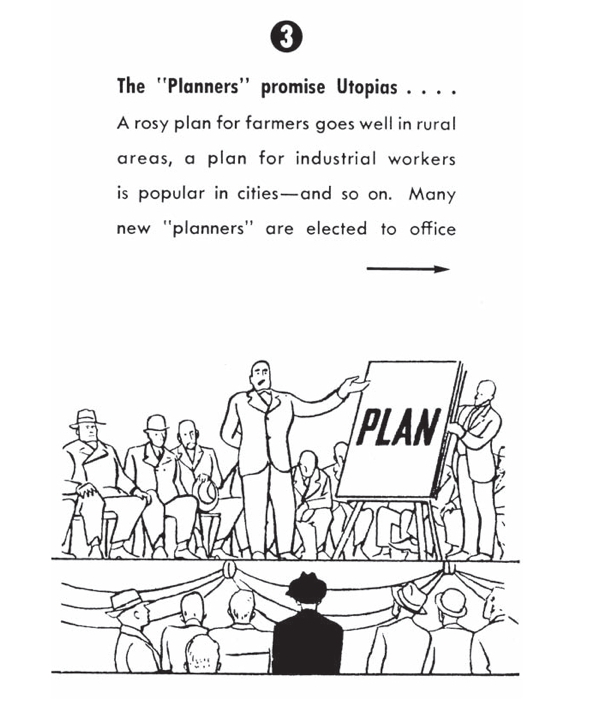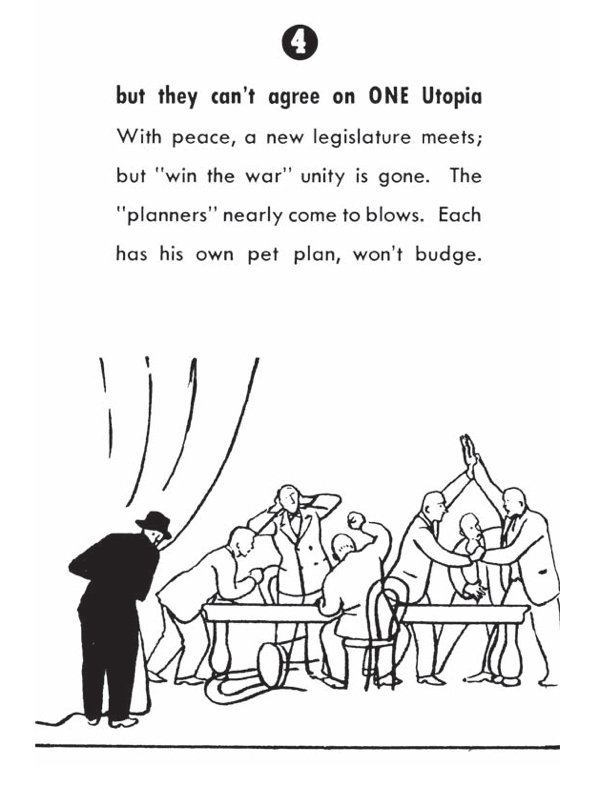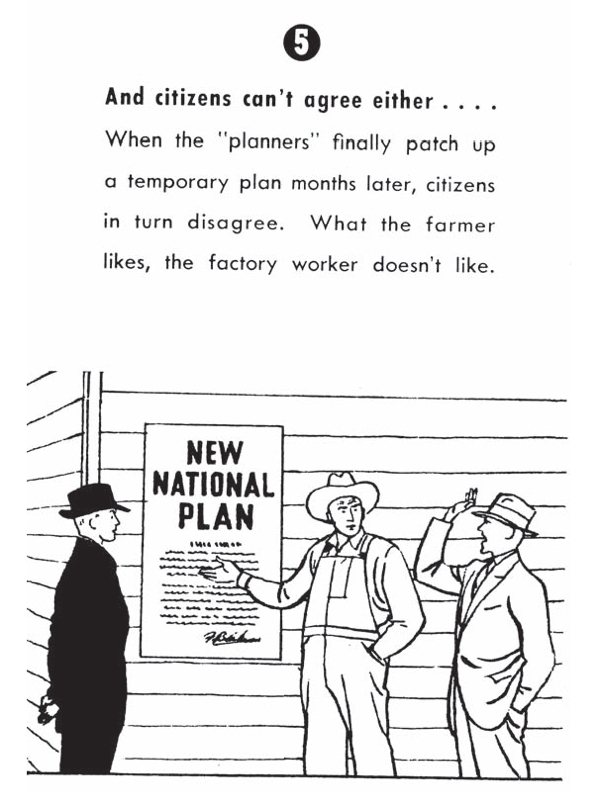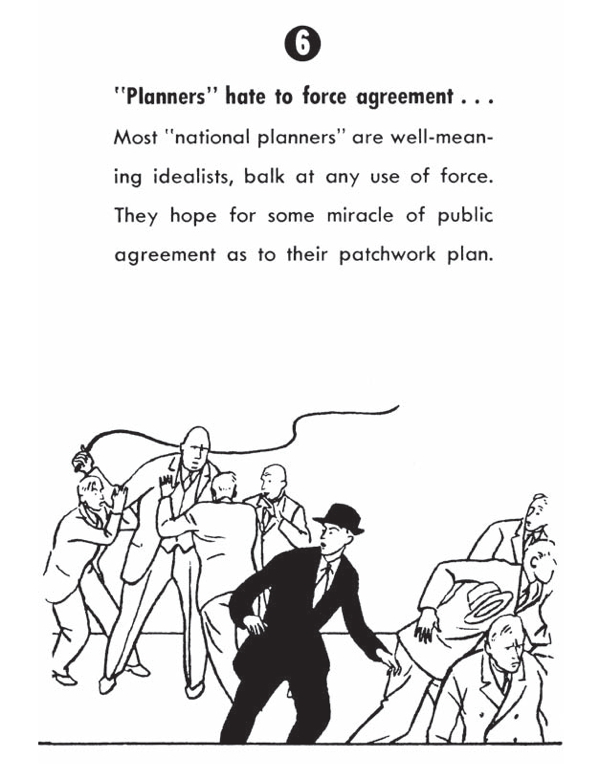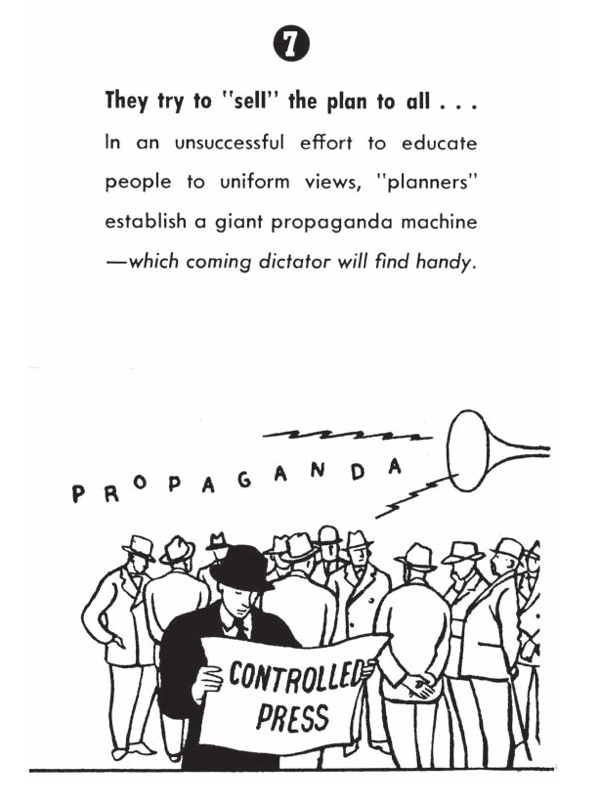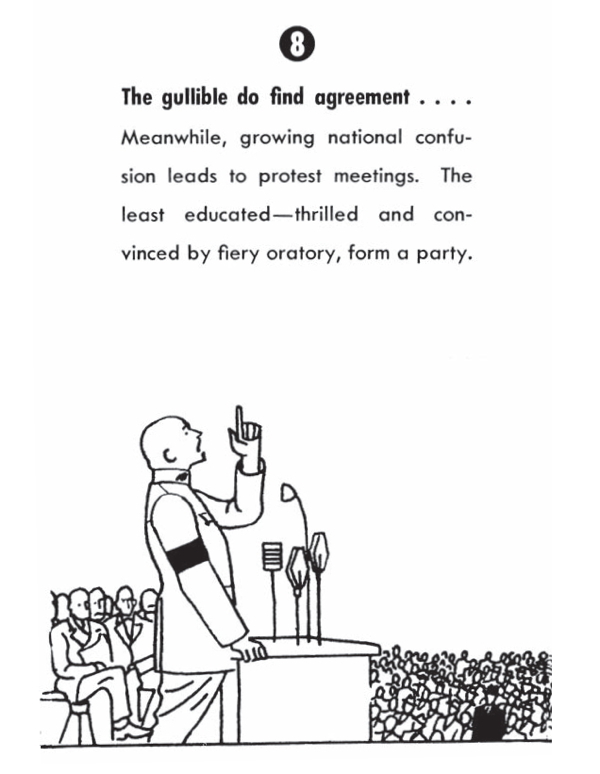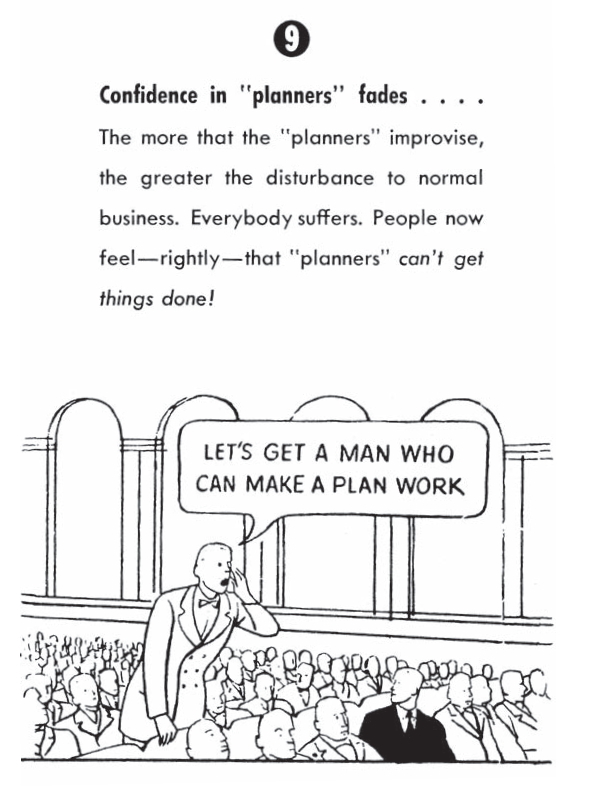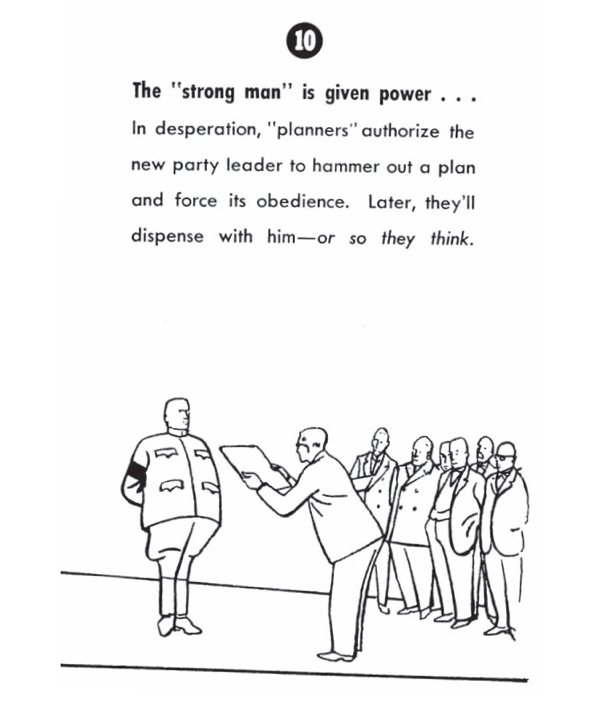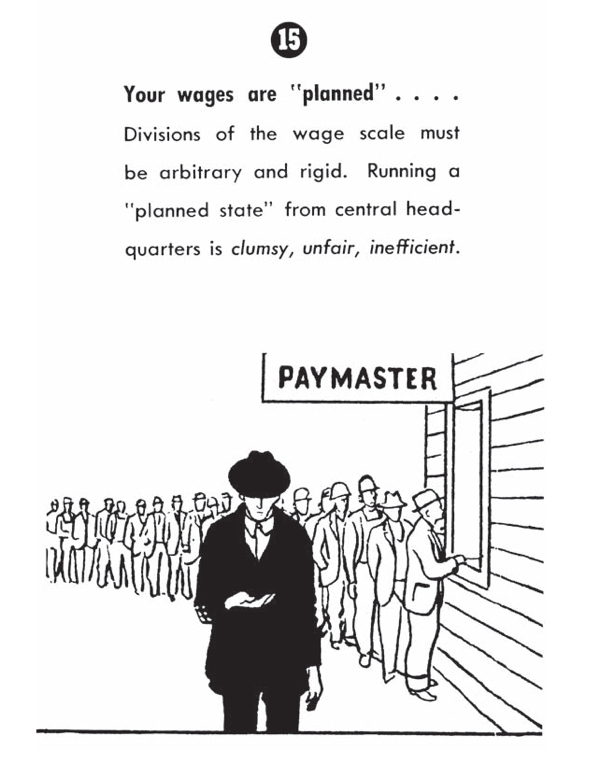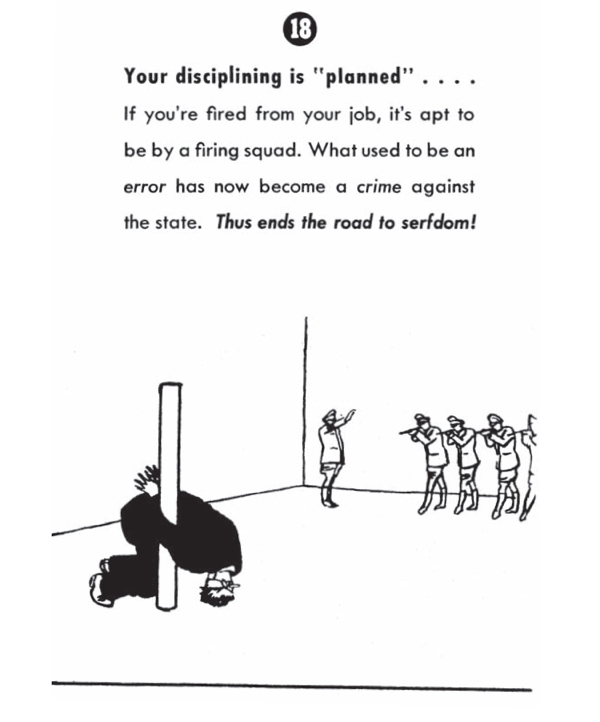Saturday, June 30, 2012
The ANZAC Book (1916): Part I Coloured Plates


The Anzac Book. Written and Illustrated in Gallipoli by The Men of Anzac. For the benefit of Patriotic Funds connected with the A.& N.Z.A.C. (London, New York, Toronto and Melbourne, 1916). Introduction by Sir W.R. Birdwood, pp. ix-x (ANZAC December 19, 1915). "Editor's Note" by The ANZAC Book Staff (Aegean Sea, December 29, 1915).
[Below are some other covers of ANZAC magazines from the period]


This is a famous book created by some of the Australian and New Zealand soldiers who landed at Gallipoli [now Gelibolu] in Turkey on 25 April 1915. It was part of a British and French attempt to knock the Ottoman Empire (allied with Germany and Austria) out of the war and to relieve the Russian Empire fighting on the eastern front. It failed to achieve these objectives and the soldiers were withdrawn by 9 January, 1916. The invading forces had 44,092 men killed and the defending Turks lost 86,692 men killed. Of these deaths, the ANZAC forces lost 11,430 men killed (Australia 8,709 and NZ 2,721). Given the very low population of both the countries the death toll was seen as quite heavy.
The book was compiled in late November in order explicitly to raise money for the war effort but with the additional, unstated goal of telling the world about how the ANZACs had coped in battle. It contains material by both officers and men, including C.E.W. Bean who is listed as one of the editors. He later went on to write a famous official history of Australian involvement in WW1 and helped establish the "ANZAC myth" in Australian history. Some of the material expresses frustration and even anger at some of the things that the enlisted men had to endure but this is rather muffled as I'm sure military censorship would have been very much in the back of their minds, as well as a fear of "letting down" their families back home. Publication was delayed because while the book was being edited the troops learned of plans to withdraw them early in the new year. This, in some respects the ANZAC Book became a farewell from the troops after enduring 9 months of fruitless combat.
This brief essay will be in two parts. The first will show the complete set of the 8 coloured plates which were used in the 200 page book. The second part will contain a selection of the other black and white cartoons and illustrations which provide some insight into the minds of the men who were present at Gallipoli in 1915.
Here are a couple of interesting illustrations which i suggest are trying to tell us another story about the ANZAC experience in the face of the military censors who no doubt would tolerate humour and some mild criticism but nothing stronger than that. At the end of the "Editor's Note" (perhaps which many would not read closely) there is a pair of illustrations which suggest that reality was quite different from the ideal view of sacrifice and combat which the troops would have learned at school and basic training. A common image throughout the work is that of the soldiers as mere beasts of burden or "donkeys" The sec on image appears at the very of the book and show a fairly cheeky soldier with a cigarette on his lips, looking a bit angry, and carrying a bandages eye. The slogan is not "Season's Greetings" which one might have expected in a book published at Christmas the 1915 but a more confrontational "Complaints of the Season."

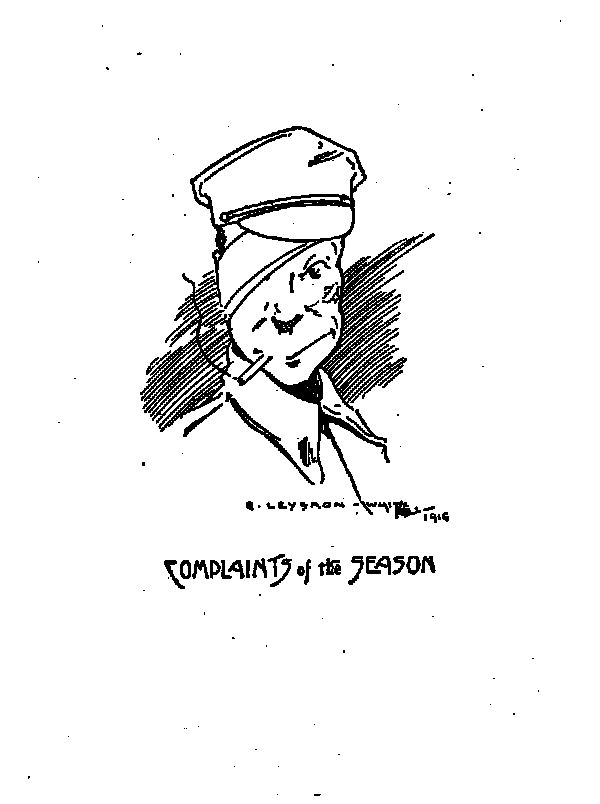
What follows below are a set set of the 8 colored plates from the book:

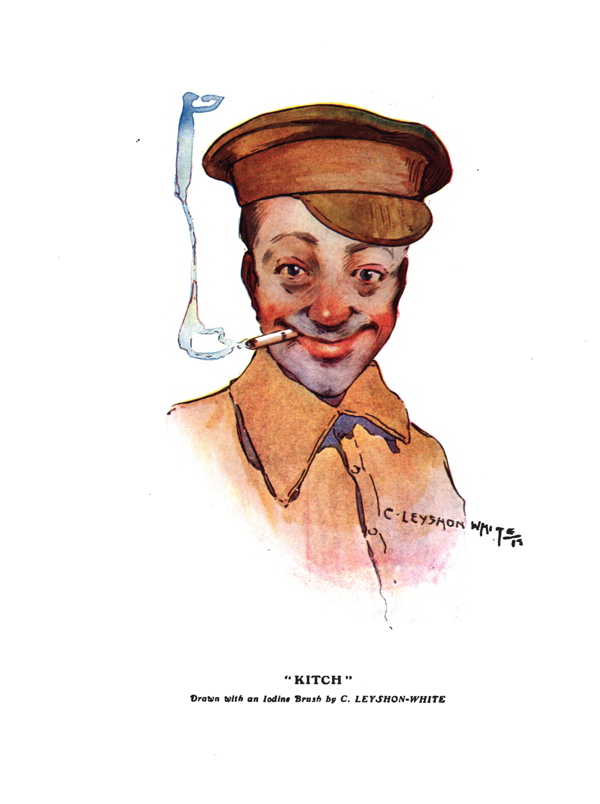

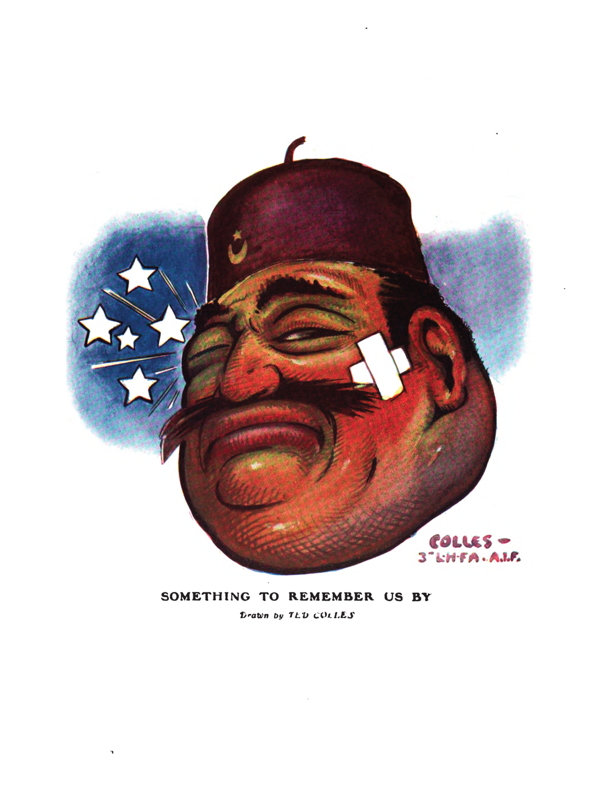
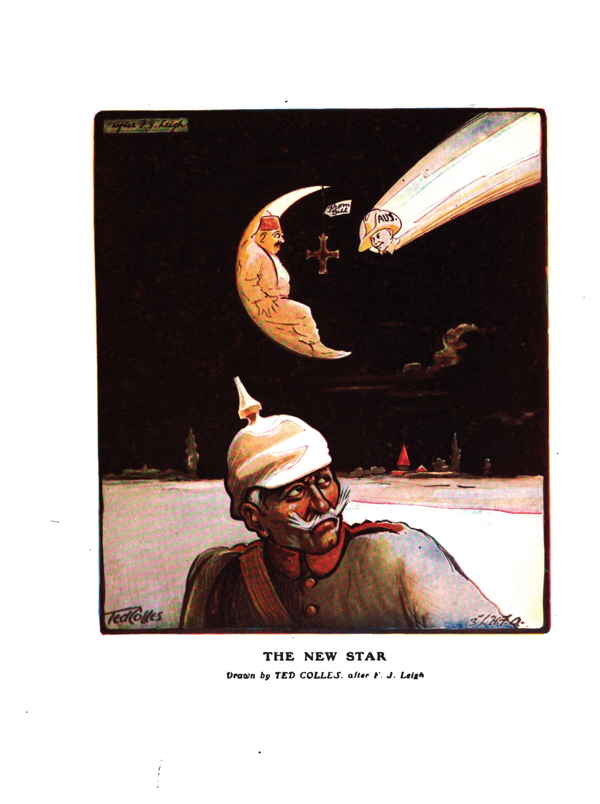

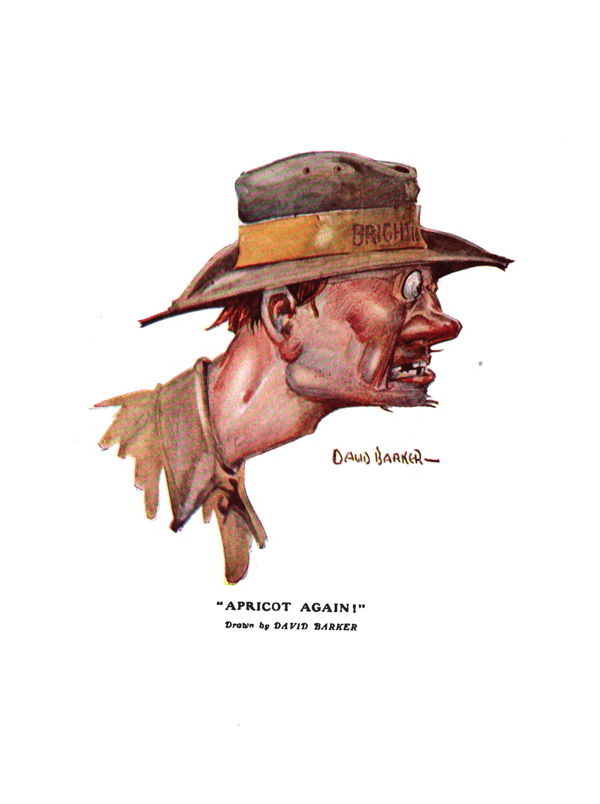
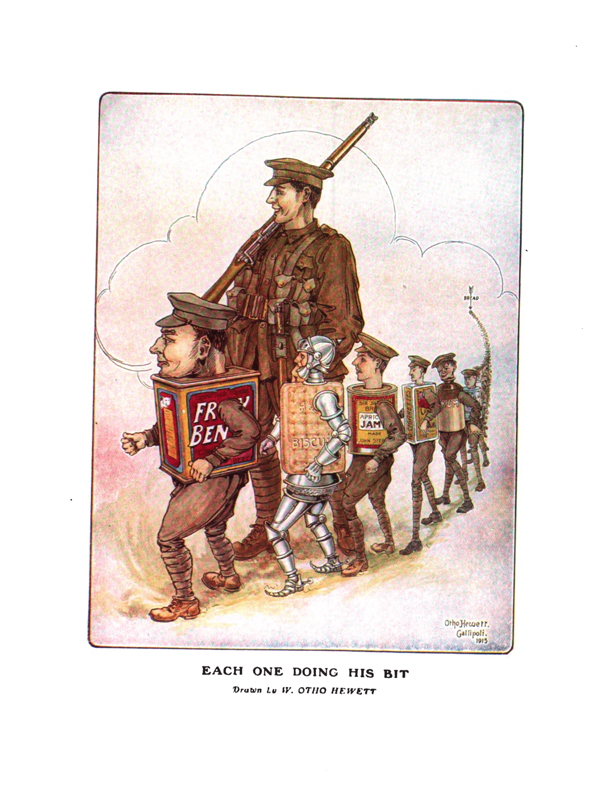
Friday, June 29, 2012
Illustrations for Bastiat's The Law

One of Frédéric Bastiat's most powerful essays is La Loi [The Law] which was published as a stand alone booklet in 1850. It was written, as was l'État [The State] (1848), as part of his reaction to the rise of socialism during the 1848 Revolution in France. In essence what Bastiat argues in these pamphlets is that forcible redistribution of tax payers money for social purposes (government unemployment relief and the right to a job in particular) is both a violation of the natural right one has to one's life and property (and thus immoral) and also impossible to achieve economically in the long term. State sanctioned plunder can work very well when a minority plunders the majority, but it is "a fiction" to believe, as many did in 1848 and 1849, that the majority can plunder the majority, which is what happens under socialism.
The French editor of the Complete Works of Bastiat, Prosper Paillottet, tells us that The Law was one of the last things written by Bastiat before he died on Christmas Eve 1850, so it is somewhat of a last will and testament. Bastiat wrote it while visiting his friends and family in his hometown of Mugron in June 1850 at a time when he must have know he was soon to die from his debilitating throat condition (perhaps cancer of the throat).
Bastiat's writings were popular for a period in Europe, being quickly translated into many European languages and they and the French editions of his works remained in print throughout the 19th century. English translations were also quickly made and Bastiat even a a "school" of followers in the late 19th century in America. Unfortunately his ideas were forgotten until the Foundation for Economic Freedom began to rehabilitate his work with new English translations in the late 1940s. The biography they had written and the new translations of the Economic Sophisms and Economic Harmonies which appeared in the mid-1960s were crucial to the revival of interest in North America in the post-war period. FEE has recently posted on their website this charming abbreviated and illustrated version of The Law [Bastiat for Dummies?] which they published in the late 1940s. It can be found here at FEE and here at my website.
FEE's edition reminds me very much of a similar abbreviated and illustrated version of Friedrich Hayek's The Road to Serfdpm (1944) which appeared at much the same time and which was obviously intended for a similar audience, namely ordinary people who had lived through the enormous expansion of government power which had taken place during the Second World War and who were new to the radical economic and political ideas of liberty which were common place in the 19th century. A condensed version of Hayek's Road to Serfdom appeared in the Reader's Digest in April 1945 and an illustrated version in Look magazine in February 1945.
See the works by Bastiat on the OLL <http://oll.libertyfund.org/person/25> including a version of The Law published by FEE <http://oll.libertyfund.org/title/78> [warning: the FEE translation has very annoying and unnecessary headings inserted by the translator which were not in the original].
We include the illustrations from the FEE edition of the late 1940s below:

[The title page]
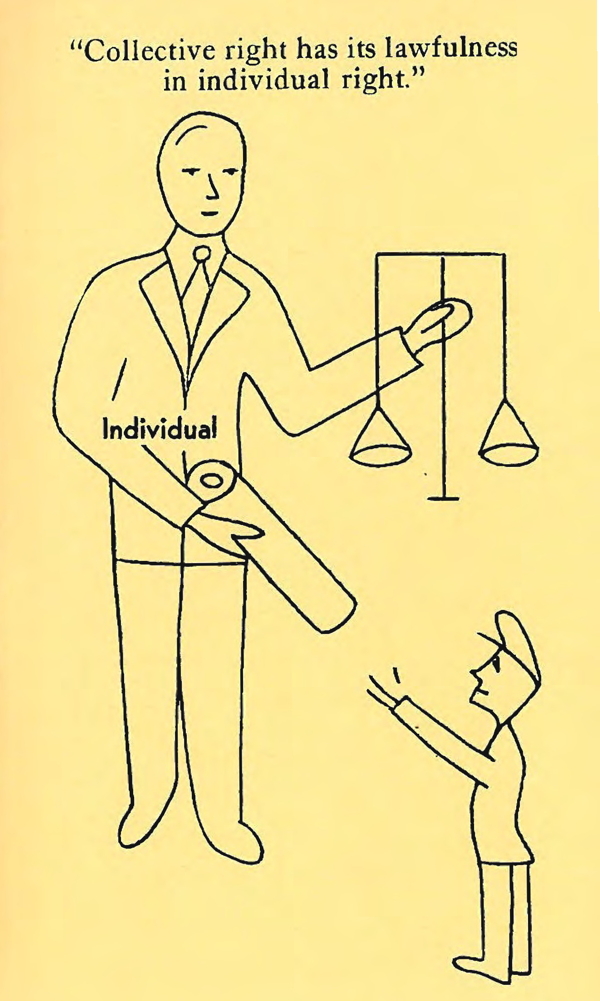
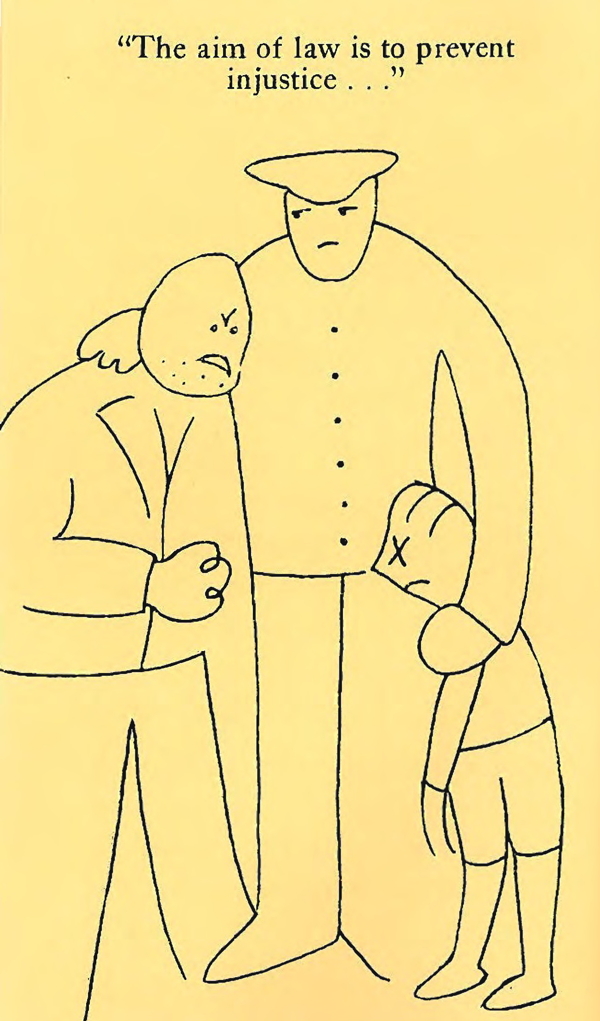
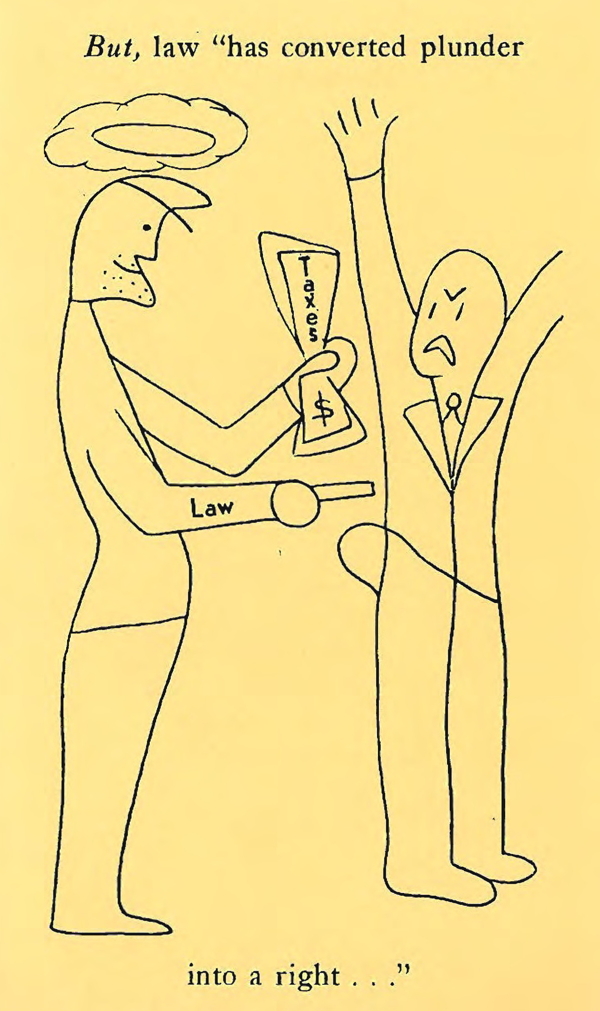
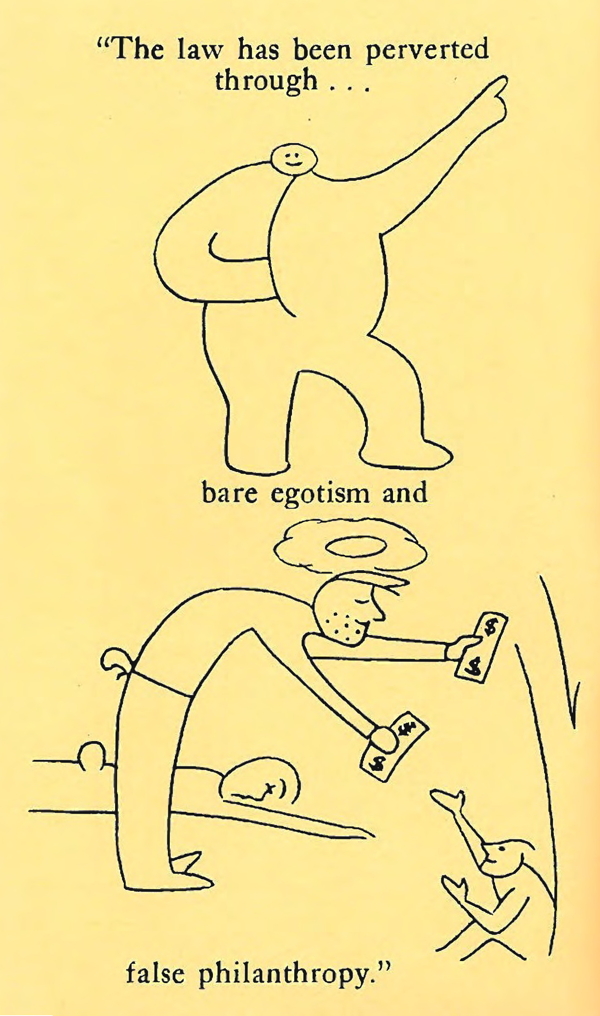
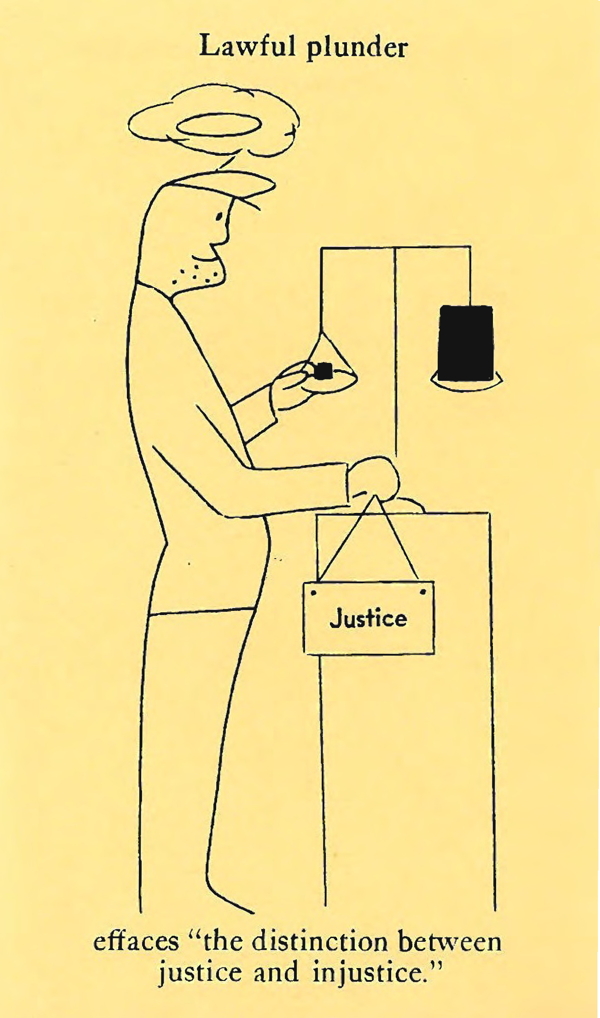
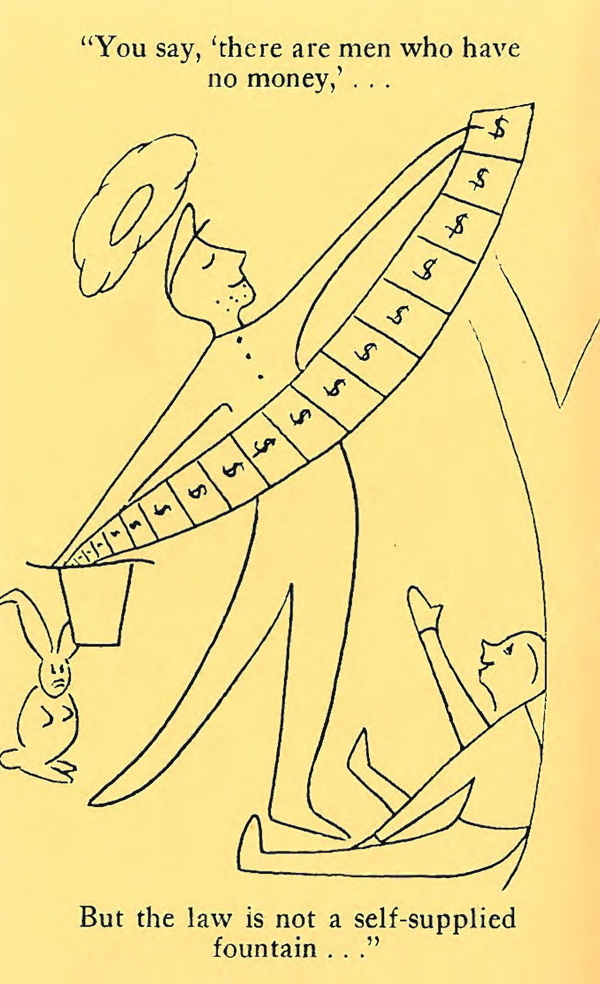

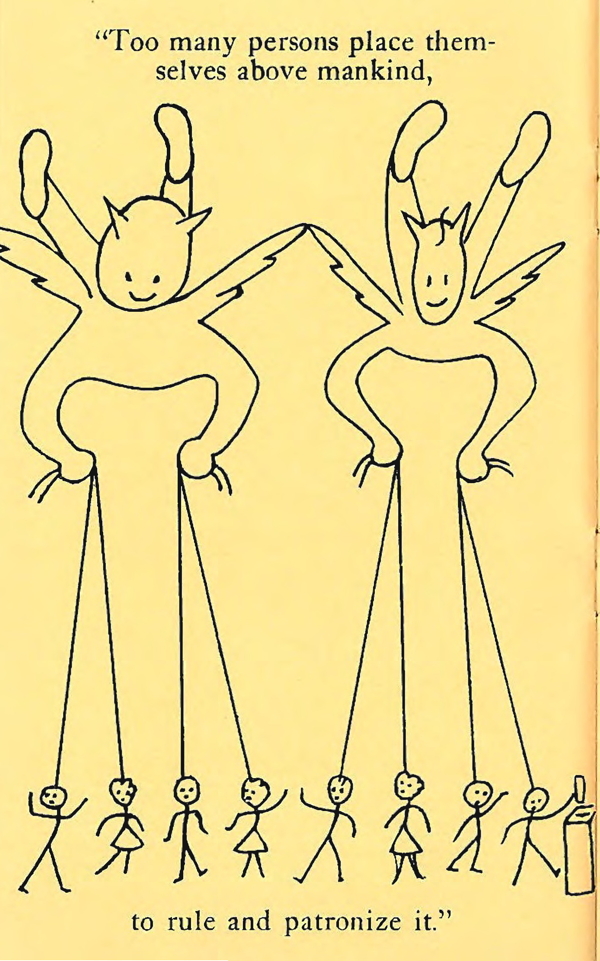


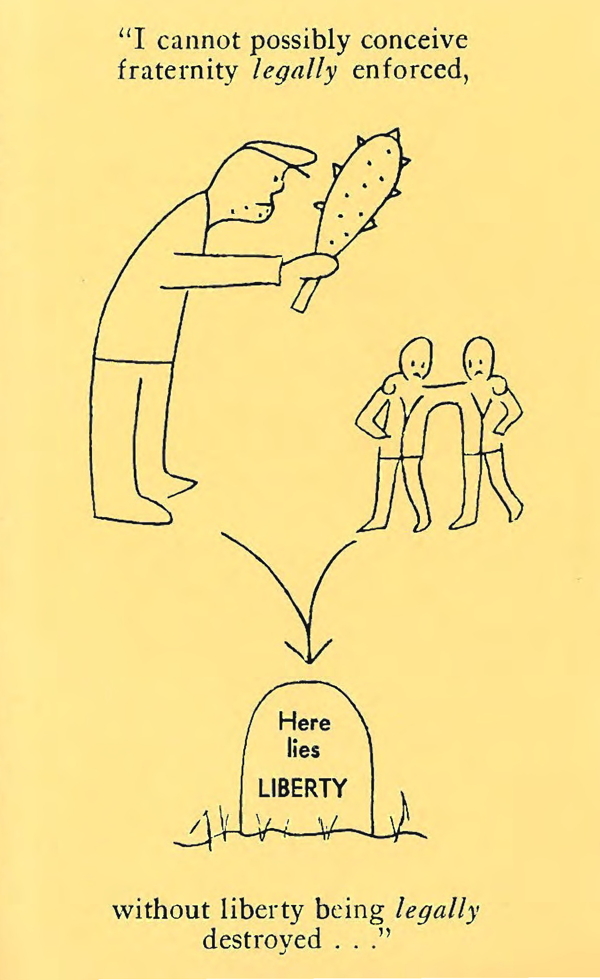
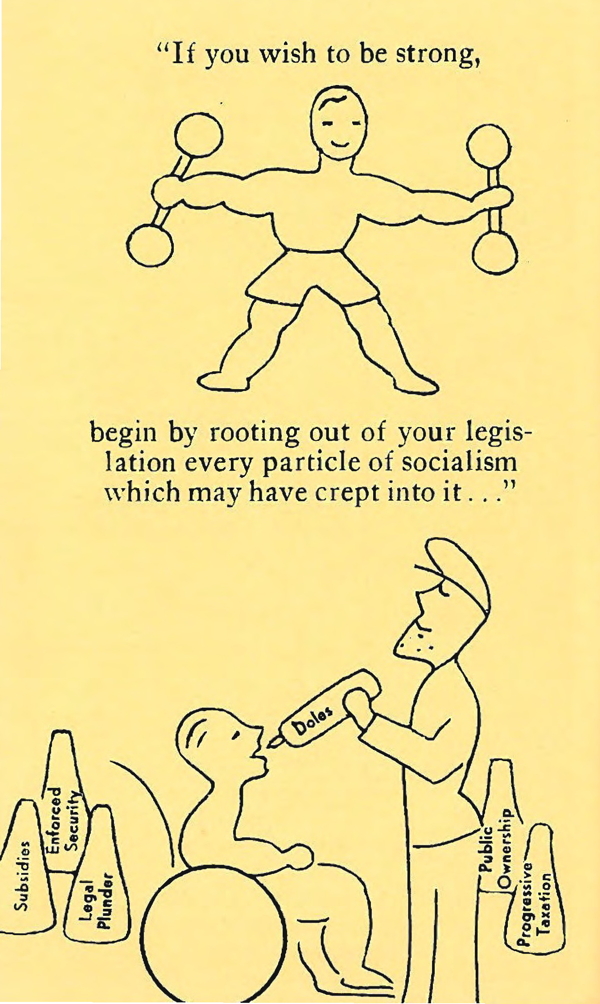
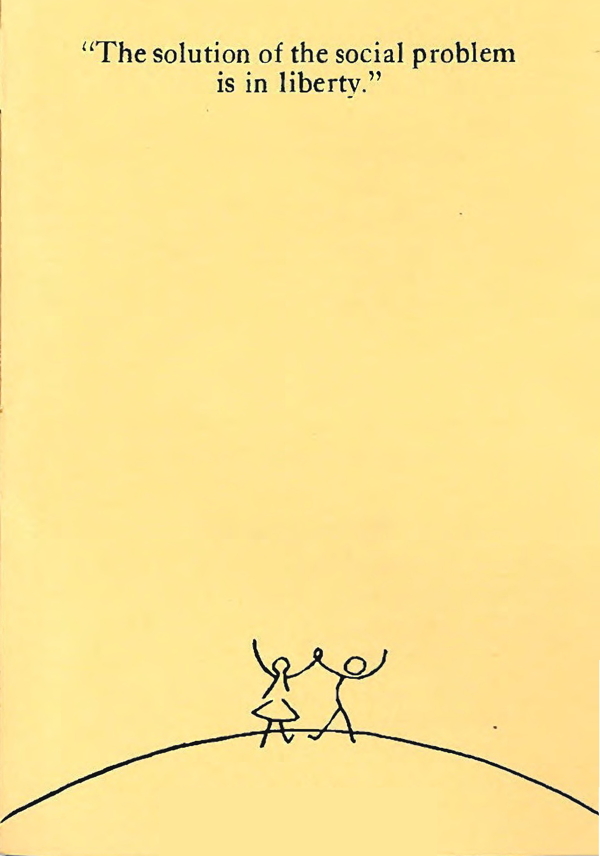
The Illustrated Road to Serfdom

As a companion piece to FEE's condensed and illustrated version of Bastiat's The Law (1850, late 1940s) here is a condensed and illustrated version of Friedrich Hayek's The Road to Serfdom (1944). This is what Wikipedia has to say about this version: "A condensed version of the book written by Max Eastman was then published as the lead article in the April 1945 issue of Reader's Digest, with a press run of several million copies. This condensed version was then offered as a Book of the Month selection with a press run of over 600,000 copies. In February 1945 a picture-book version was published in Look magazine, later made into a pamphlet and distributed by General Motors." [Since General Motors has been the recipient of a massive government bailout by the Obama administration I'm not sure they would support Hayek's or Bastiat's views about the free market today and would probably disavow their affiliation with this edition today.]
The Institute for Economic Affairs in London produced a very nice edition which combines this and other versions into one book: Friedrich A. Hayek, The Road to Serfdom with The Intellectuals and Socialism. The Condensed Version of The Road to Serfdom by F.A. Hayek as it appeared in the April 1945 edition of Reader's Digest (London: The Institute for Economic Affairs, 2005).
As you can see from the illustrations the depiction of the "planners" draws from the historical example of the Nazi Party (arm bands and jack boots). If the illustrated version sere to be updated to the present the artist would no doubt draw the "planners" in business suits which is the uniform worn by the current generation of planners and regulators. The politicians and bureaucrats of today think that if they wear the uniform of the businessman and not the Gauleiter we won't notice the difference. Another major difference is the concluding illustration. In 1944-45 it might have seemed that the inevitable result of government planning of the economy would be the firing squad for any dissenters or rebels. We now know that this is rather overwrought. After 70 years of government planning, inflation, and growing debt we know that this is not necessary for the state to maintain its rule. The old Roman strategy of "bread and circuses" for the masses seems to work every time. We can and have been bought off repeatedly. The "serfdom" of the modern welfare/warfare state is a much softer kind of serfdom to that which existed under Nazism and Stalinism.
Here are the illustrations:


